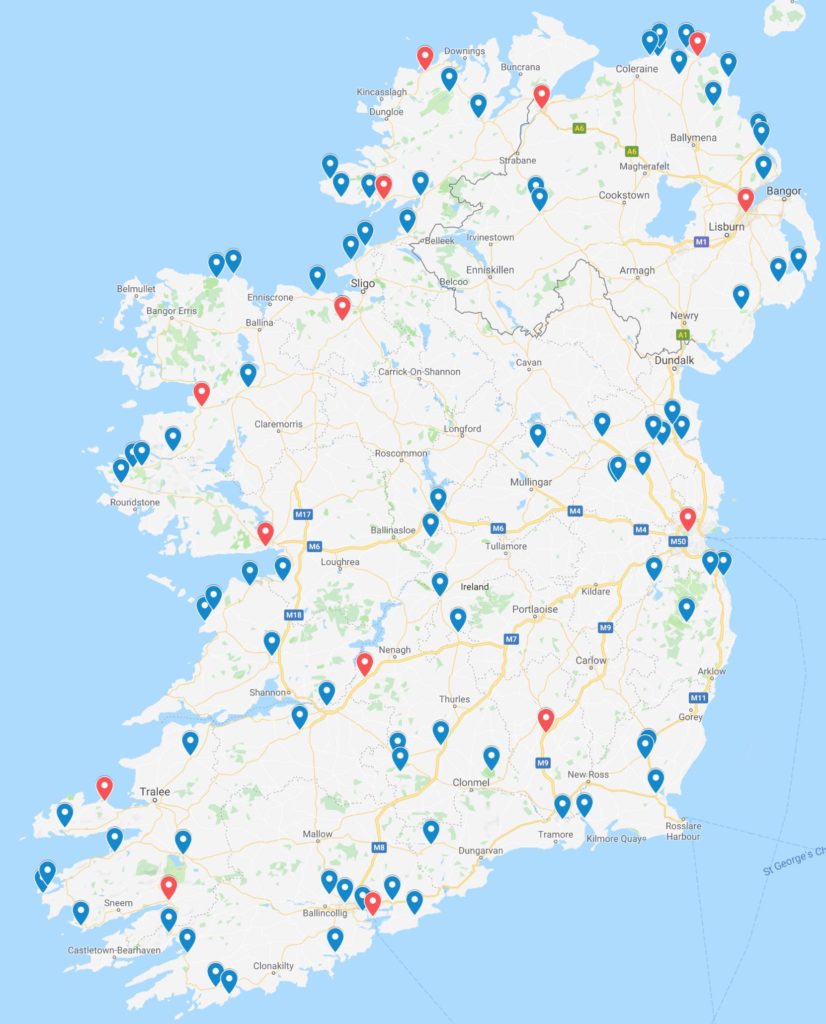*the English Pale: that part of Ireland over which England exercised jurisdiction before the whole country was conquered. Centered in Dublin, it varied in extent at different times from the reign of Henry II until the full conquest under Elizabeth I. (macOS Dictionary)

We have left the city and have begun our clockwise, eleven-week route around the island! First stop: Bray. Okay, we only made it thirteen miles south of Dublin, but we had to get used to the driving—Marcus to turning right into the left lane and merging left into roundabouts, and Cindy to stop shouting “Watch out!” every time Marcus passed anything. American drivers talk about the difficulty of driving on the left side of the road, but consider for a moment how difficult it is to be a passenger on the left side of the car. I feel like I am riding astride the white line on the edge of a road with no shoulder. Every tree limb, every bus pulling out from the curb, every sideview mirror on a parked car is doomed. I envision large gashes where paint has been removed from some unsuspecting Dubliner’s car. I think of the 5000 euro authorization on our credit card to cover any damage to the rental car that we dismissed as something that would never become an actual charge, and I think about all the much more entertaining ways I could spend that kind of money. [Note: I finally promised to quit shouting out if Marcus accepted full responsibility in the event that we actually hit something. I now just close my eyes and wait for the impact.] But I digress….

Bray. There’s an outstanding walk up Bray Head with stunning views of the Irish Sea. You can even see the Howth Peninsula on the north side of Dublin Bay in the distance. The skies had finally cleared, and we had a gloriously sunny day.

There’s a 640-foot elevation gain from the beach up to the cross at the top of the Head. I hadn’t done so much as a calf stretch since leaving home. Was I up for this? We sought out local knowledge—a guy emptying the trash bin at the car park.
“No worries!” he said. “The whole path is paved. It will take you 15 minutes. Sometimes I do it during my lunch hour. I run most of it, and walk some.”
I looked up at the cross doubtfully, but who was I to question a local? So we began. After ten minutes the paved path became a muddy track. Fifteen minutes in, we were picking our way up tree-root steps, then scrambling up rocky cascades.

You know, we’re still growing accustomed to the Irish sense of humor, so I’m wondering (as we scrambled): Is anyone who asks advice from an Irish person presenting themselves as the butt of a joke? I had to laugh. Perhaps we had asked for it. But one thing he said was absolutely true: the views from the peak were spectacular.

















